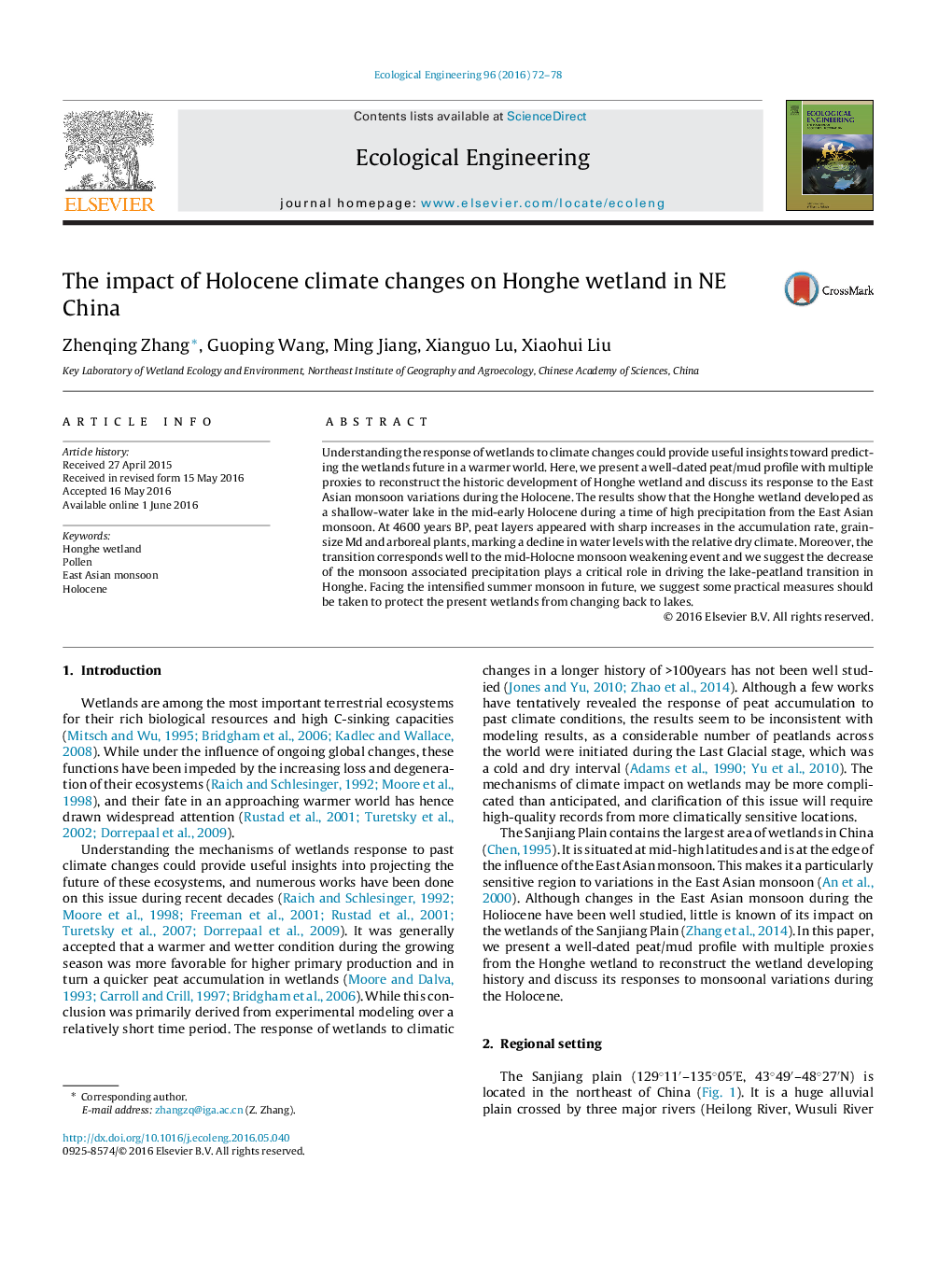| Article ID | Journal | Published Year | Pages | File Type |
|---|---|---|---|---|
| 5744089 | Ecological Engineering | 2016 | 7 Pages |
Understanding the response of wetlands to climate changes could provide useful insights toward predicting the wetlands future in a warmer world. Here, we present a well-dated peat/mud profile with multiple proxies to reconstruct the historic development of Honghe wetland and discuss its response to the East Asian monsoon variations during the Holocene. The results show that the Honghe wetland developed as a shallow-water lake in the mid-early Holocene during a time of high precipitation from the East Asian monsoon. At 4600 years BP, peat layers appeared with sharp increases in the accumulation rate, grain-size Md and arboreal plants, marking a decline in water levels with the relative dry climate. Moreover, the transition corresponds well to the mid-Holocne monsoon weakening event and we suggest the decrease of the monsoon associated precipitation plays a critical role in driving the lake-peatland transition in Honghe. Facing the intensified summer monsoon in future, we suggest some practical measures should be taken to protect the present wetlands from changing back to lakes.
